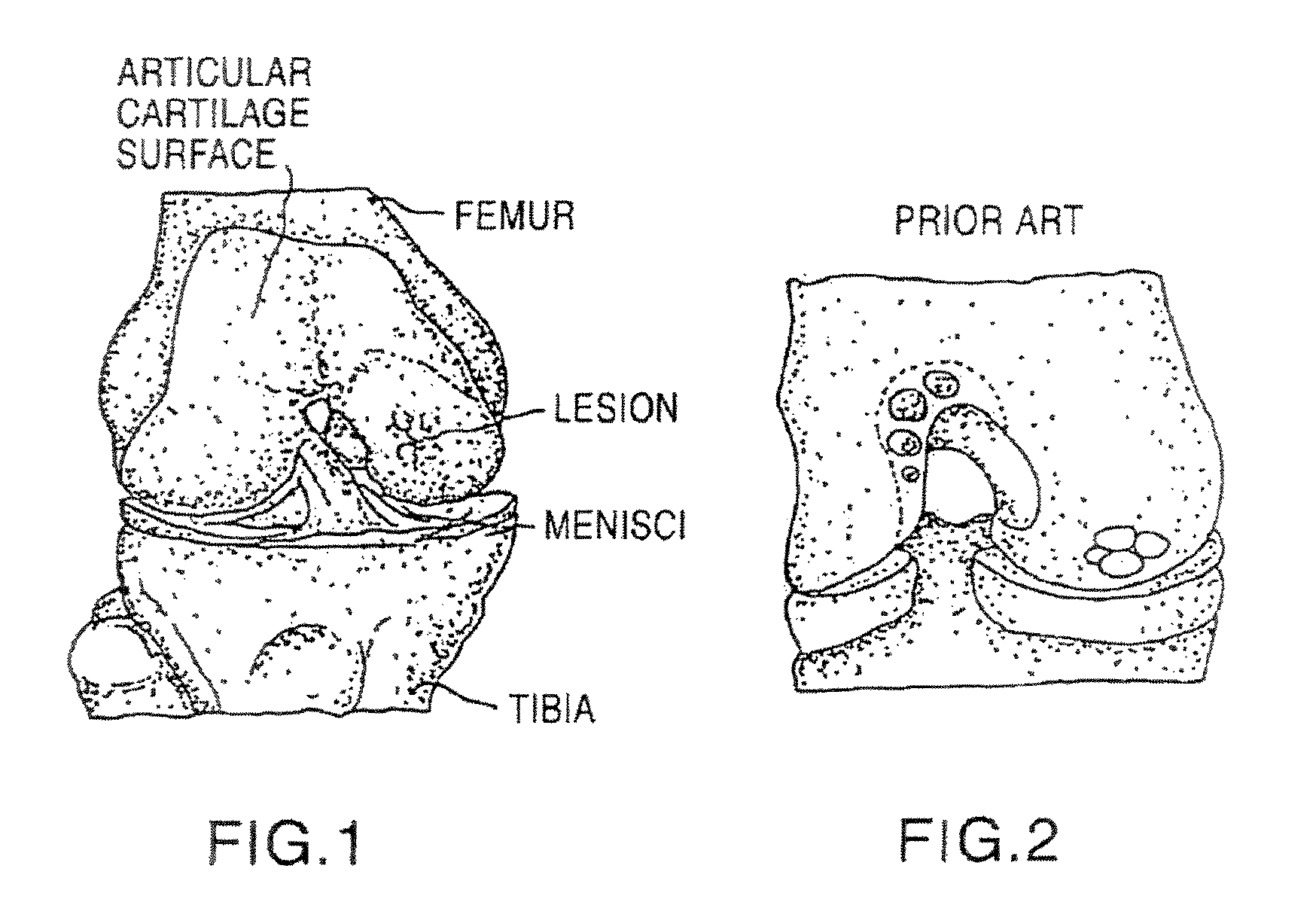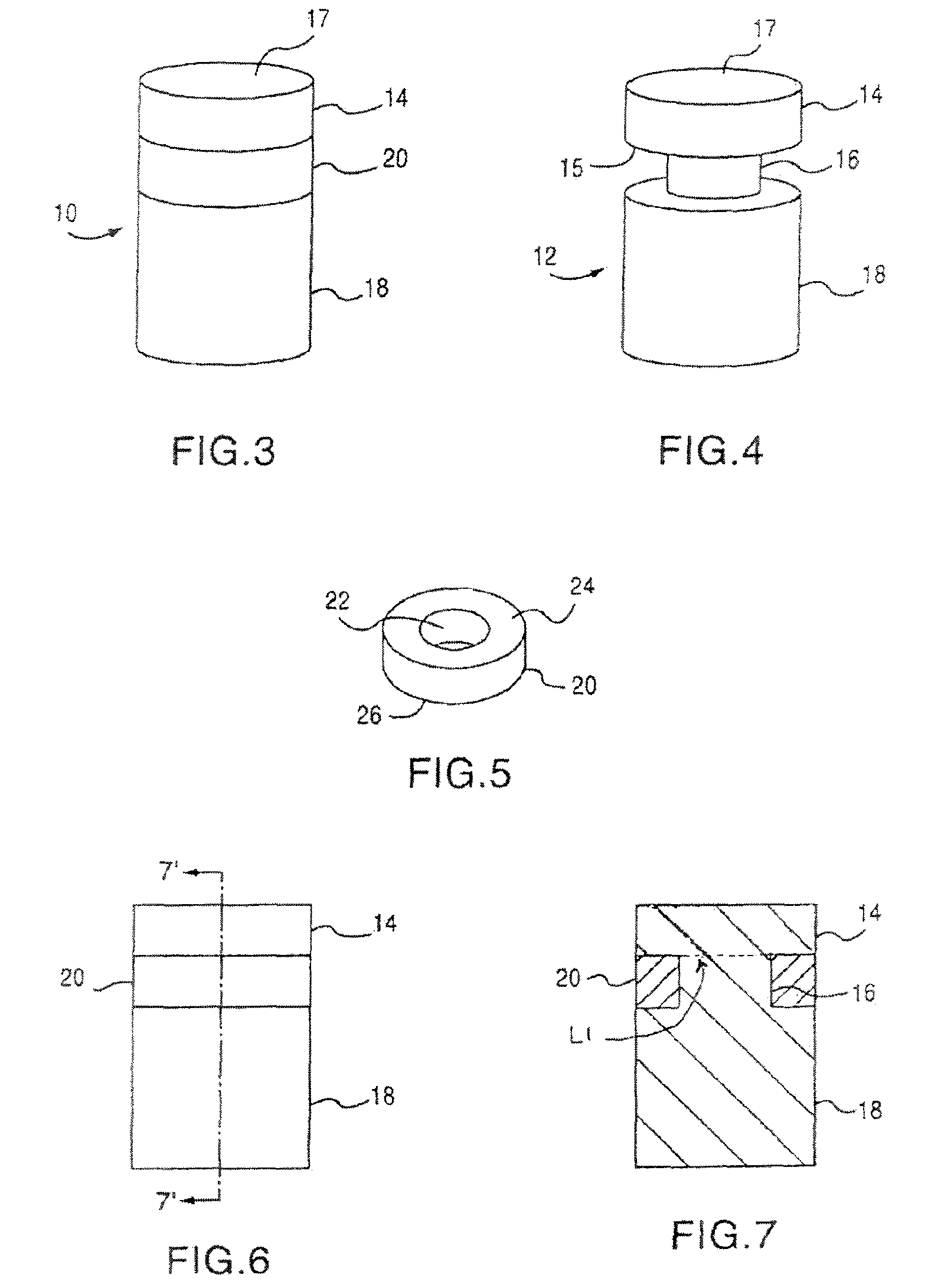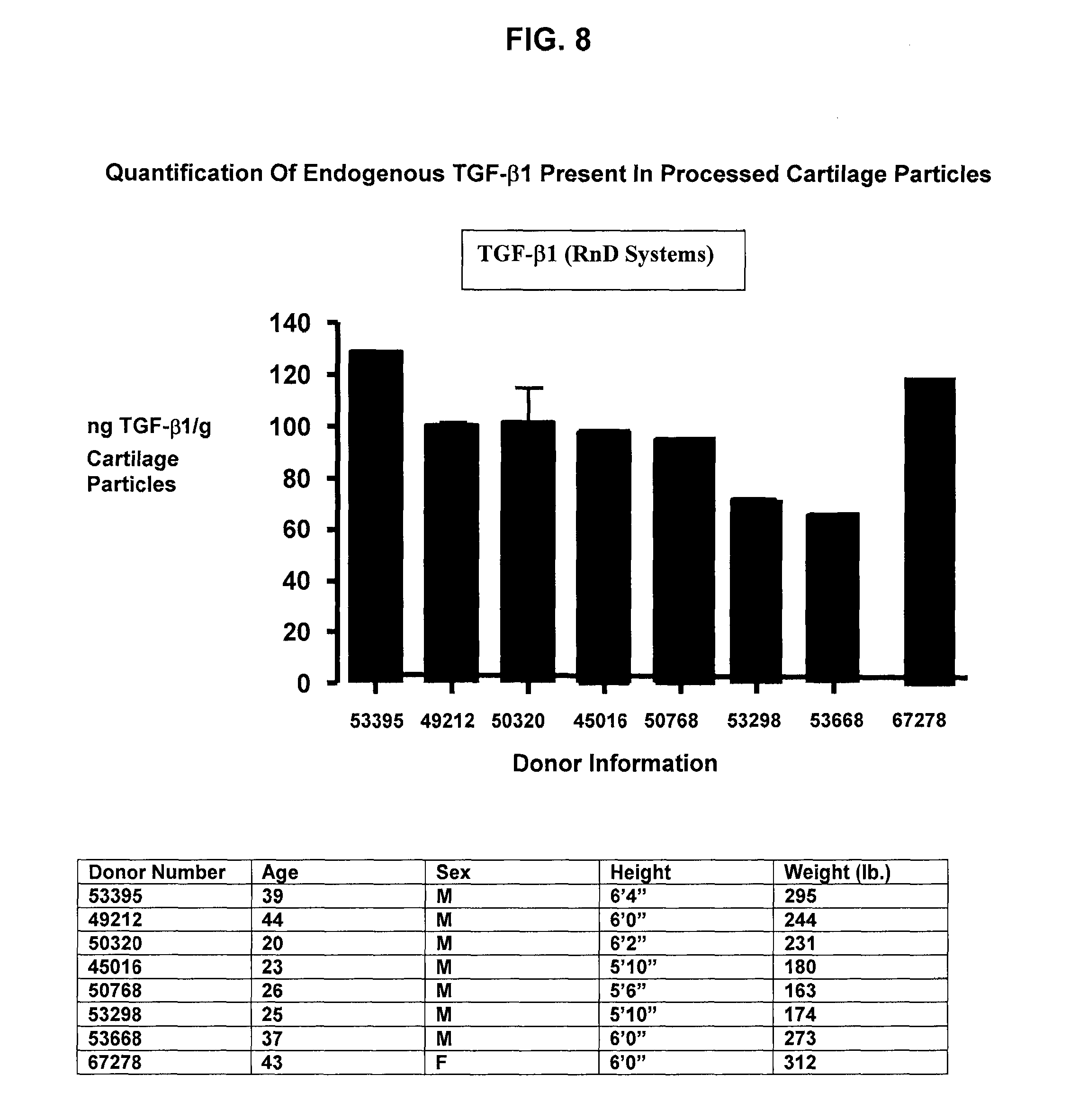Cancellous construct with support ring for repair of osteochondral defects
a technology of osteochondral defect and support ring, which is applied in the direction of prosthesis, drug composition, peptide/protein ingredients, etc., can solve the problems of articular cartilage lesions generally not healing, pain or severe restriction of joint movement, and limited hyaline cartilage regeneration, etc., to facilitate bone healing and/or repair of hyaline cartilag
- Summary
- Abstract
- Description
- Claims
- Application Information
AI Technical Summary
Benefits of technology
Problems solved by technology
Method used
Image
Examples
example 1
Processed Cartilage Particle Extraction
[0060]Cartilage is recovered from deceased human donors, and the tissue may be treated with any known method or methods for chemically cleaning or treating a soft tissue. The cartilage is then lyophilized, freeze-milled, then sieved to yield particle sizes of, on average, less than or equal to 212 microns,. The cartilage particles are -again lyophilized prior to storage or extraction. The particles are extracted in guanidine HCl by incubating at 4° C. on an orbital shaker at 60 rpm for 24 hr, followed by dialysis (8 k MWCO membrane dialysis tube) in 0.05M Tris HCl for 15 hrs at 4° C. The dialysis solution was then replaced and the dialysis continued for another 8 hrs at 4° C. The post-dialysis extracts were stored at −70° C. until ELISA analysis.
example 2
Quantification Of Endogenous Growth Factors Present In Processed Cartilage
[0061]0.25 g of cartilage particles were weighed out for each donor. The cartilage particles were transferred to tubes containing 5 ml of extraction solution (4M Guanidine HCl in TrisHCl). The cartilage particles were incubated at 4° C. on the orbital shaker at 60 rpm for 24 hr, followed by dialysis (8 k MWCO membrane dialysis tube) in 0.05M TrisHCl for 15 hrs at 4° C. The dialysis solution was then replaced and the dialysis continued for another 8 hrs at 4° C. The post-dialysis extracts were stored at −70° C. until ELISA run. Notably, the above protocol can also be utilized in order to determine the total growth factor concentration (e.g., exogenous plus endogenous) present in a device of the instant invention.
[0062]FIG. 8 illustrates the relative concentration of endogenous TGF-β1 found in cartilage particles of the present invention as derived from various donors and manufactured in accordance with Example ...
PUM
| Property | Measurement | Unit |
|---|---|---|
| size | aaaaa | aaaaa |
| diameter | aaaaa | aaaaa |
| size | aaaaa | aaaaa |
Abstract
Description
Claims
Application Information
 Login to View More
Login to View More - R&D
- Intellectual Property
- Life Sciences
- Materials
- Tech Scout
- Unparalleled Data Quality
- Higher Quality Content
- 60% Fewer Hallucinations
Browse by: Latest US Patents, China's latest patents, Technical Efficacy Thesaurus, Application Domain, Technology Topic, Popular Technical Reports.
© 2025 PatSnap. All rights reserved.Legal|Privacy policy|Modern Slavery Act Transparency Statement|Sitemap|About US| Contact US: help@patsnap.com



